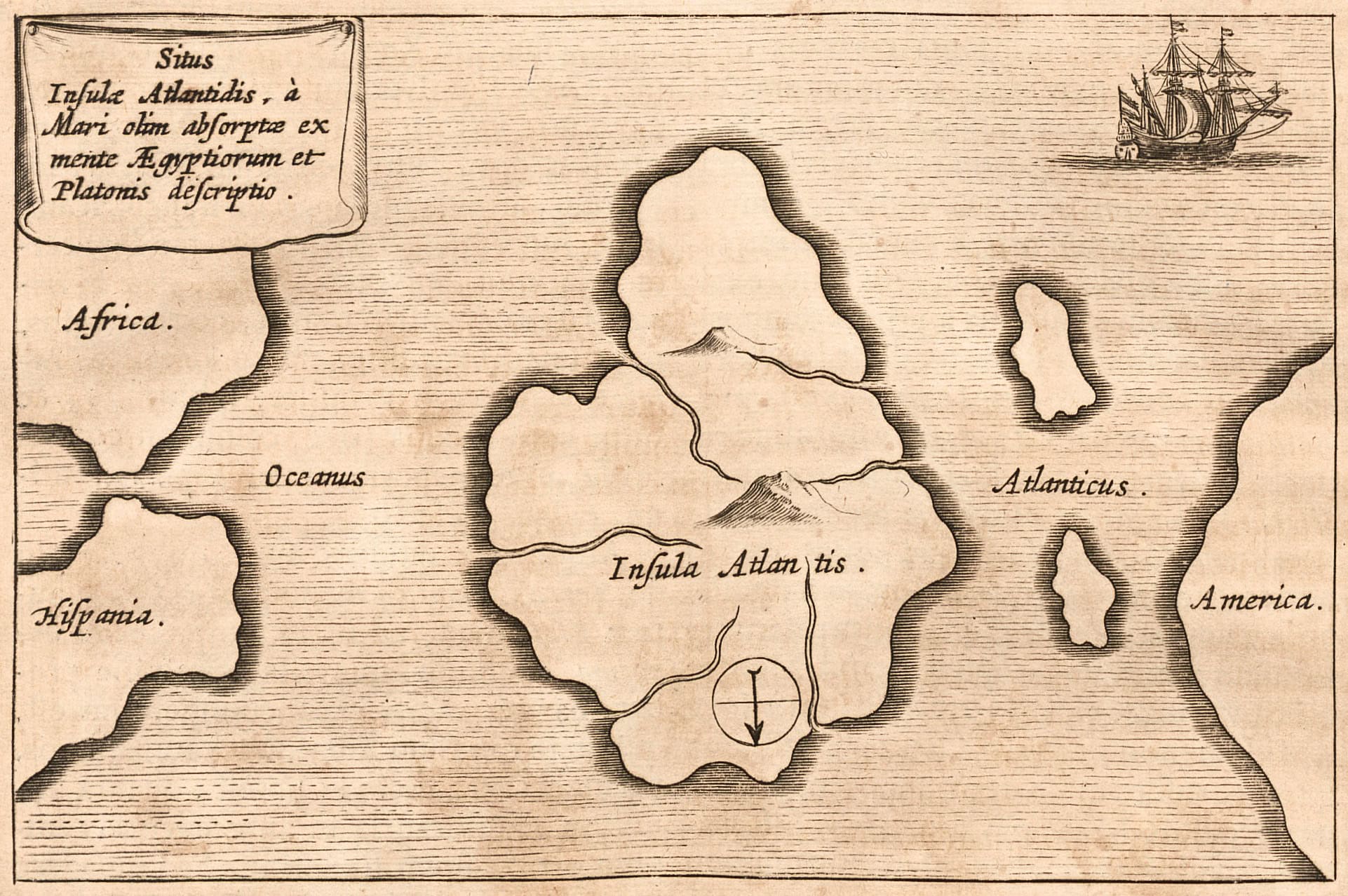The world is filled with incredible natural wonders, but some of the most fascinating geological features are those tucked away in remote corners of the globe. These bizarre landscapes, shaped by millions of years of natural forces, captivate with their unusual formations and striking beauty. From towering stone pillars and vibrant mountains to eerie caves and alien-like salt flats, these geological wonders stand out not just for their rarity, but for the sense of mystery they evoke. In this article, we’ll explore 15 of the most bizarre geological features found in some of the most isolated regions on Earth.
Eye of Sahara, Mauritania
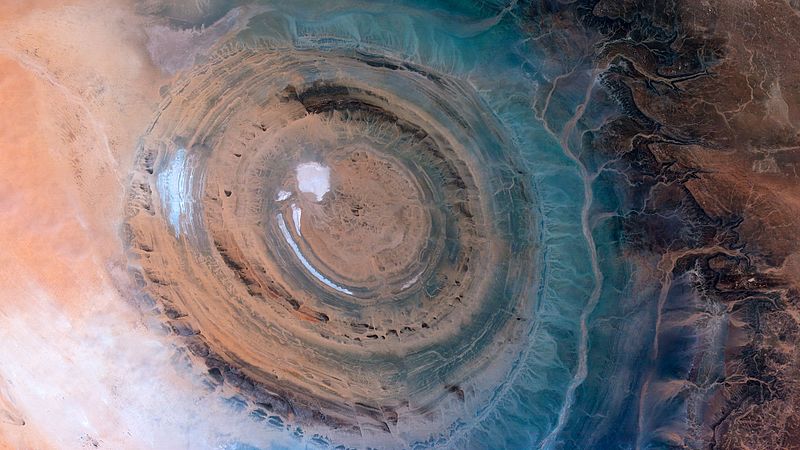
The Eye of the Sahara, also known as the Richat Structure, is a mysterious geological formation in Mauritania’s vast desert. Spanning 40 kilometers in diameter, this immense circular feature is best seen from space, where it resembles a giant bull’s eye. Initially thought to be an impact crater caused by a meteorite, extensive studies revealed that the Eye of the Sahara is actually a highly eroded geologic dome. The structure’s concentric rings of exposed sedimentary rock are a result of millions of years of natural erosion. These rings have distinct hues ranging from blue to white to brown, giving the Eye its otherworldly appearance. The remote location of this feature, combined with its scale and the unusual concentric pattern, make it one of the most bizarre and intriguing geological formations on Earth. Its stark contrast against the surrounding barren desert landscape adds to its eerie and captivating allure, drawing the curiosity of scientists and adventurers alike.
Rainbow Mountain, Peru
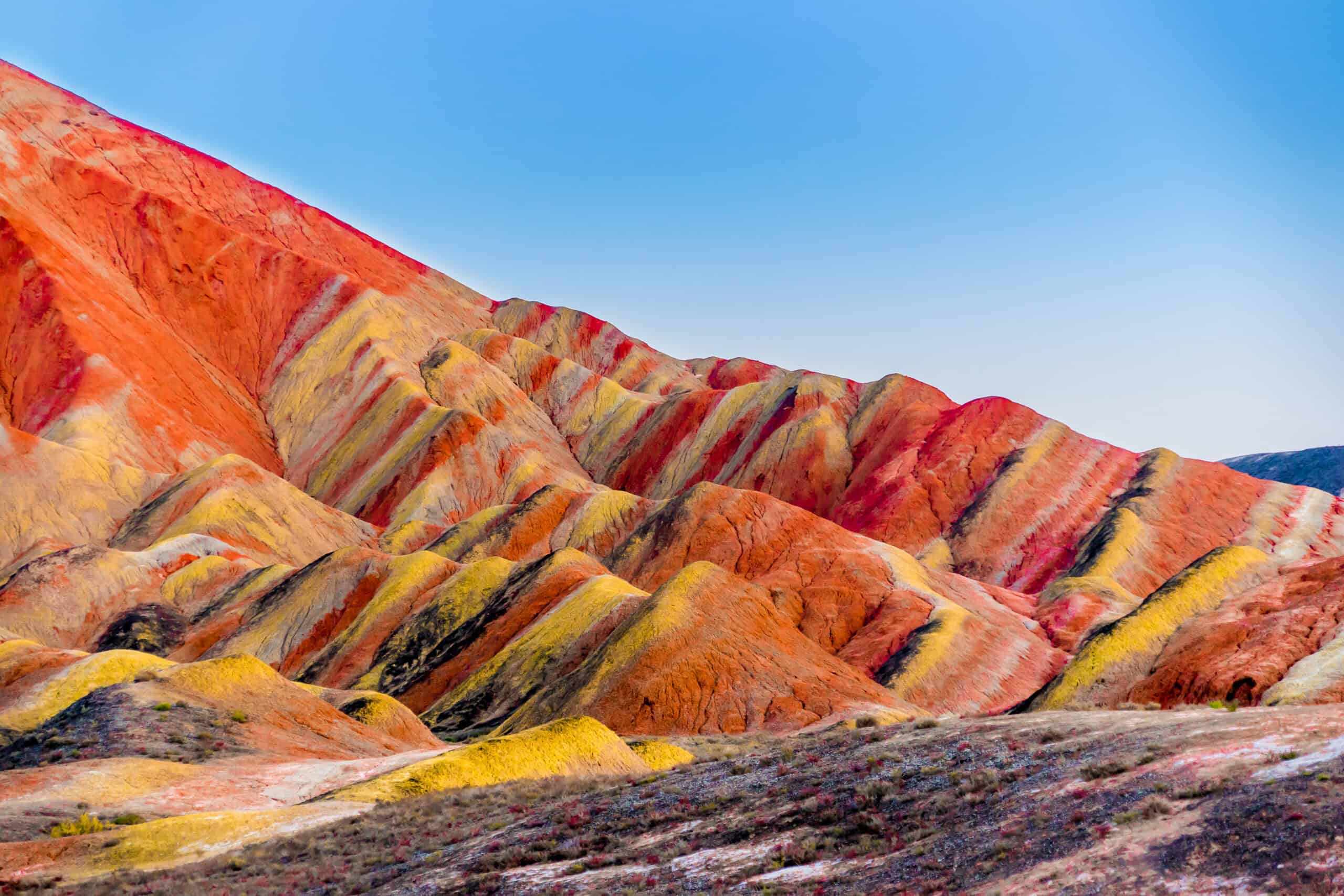
Rainbow Mountain, or Vinicunca, located in the Andes of Peru, is a natural masterpiece of vibrant colors and geological significance. This surreal mountain, nestled at an altitude of over 5,000 meters, boasts streaks of red, yellow, green, and purple that cascade down its slopes like a painter’s palette. The colors are a result of mineral deposits, with red from iron oxide, green from chlorite, and yellow from sulfur, each layer formed over millions of years. The vibrant stripes, once hidden beneath a blanket of snow and ice, were revealed due to the effects of climate change, which has made this remote region accessible to adventurous travelers. The mountain’s location, high in the Peruvian Andes and far from urban centers, adds to its bizarre charm, making it both a challenging and rewarding destination. The stark beauty of Rainbow Mountain, juxtaposed against the harsh yet stunning environment of the Andes, makes it one of the most unusual geological wonders in the world.
Pamukkale, Turkey
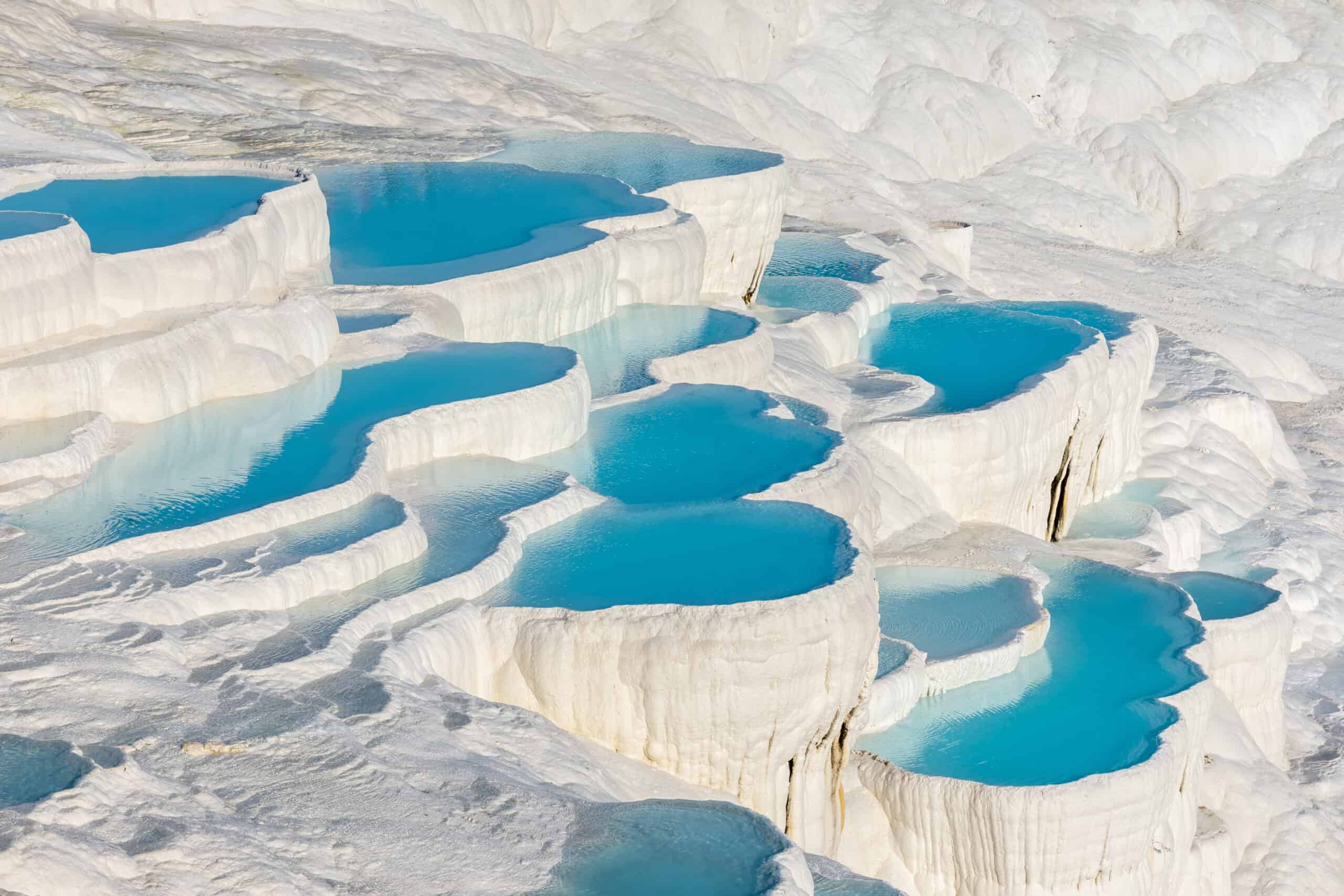
Pamukkale, meaning “Cotton Castle” in Turkish, is a striking natural wonder located in the Denizli Province of Turkey. This UNESCO World Heritage Site is renowned for its terraced pools of brilliant white travertine, a form of limestone deposited by mineral-rich hot springs. These terraces, cascading down the hillside, create a surreal, otherworldly landscape that looks like frozen waterfalls. The thermal waters, rich in calcium carbonate, flow down the mountainside, leaving behind the white deposits that form the terraces. Over thousands of years, this process has sculpted Pamukkale into its current form, with each terrace resembling a petrified cotton field. The site’s unique appearance and the fact that it has been a spa destination for thousands of years add to its mystique. The ancient city of Hierapolis, with its well-preserved ruins, sits atop this natural marvel, further enhancing its historical and cultural significance. Pamukkale’s combination of natural beauty and historical depth makes it one of the most bizarre and breathtaking geological features in the world.
The Wave, Arizona/Utah, USA
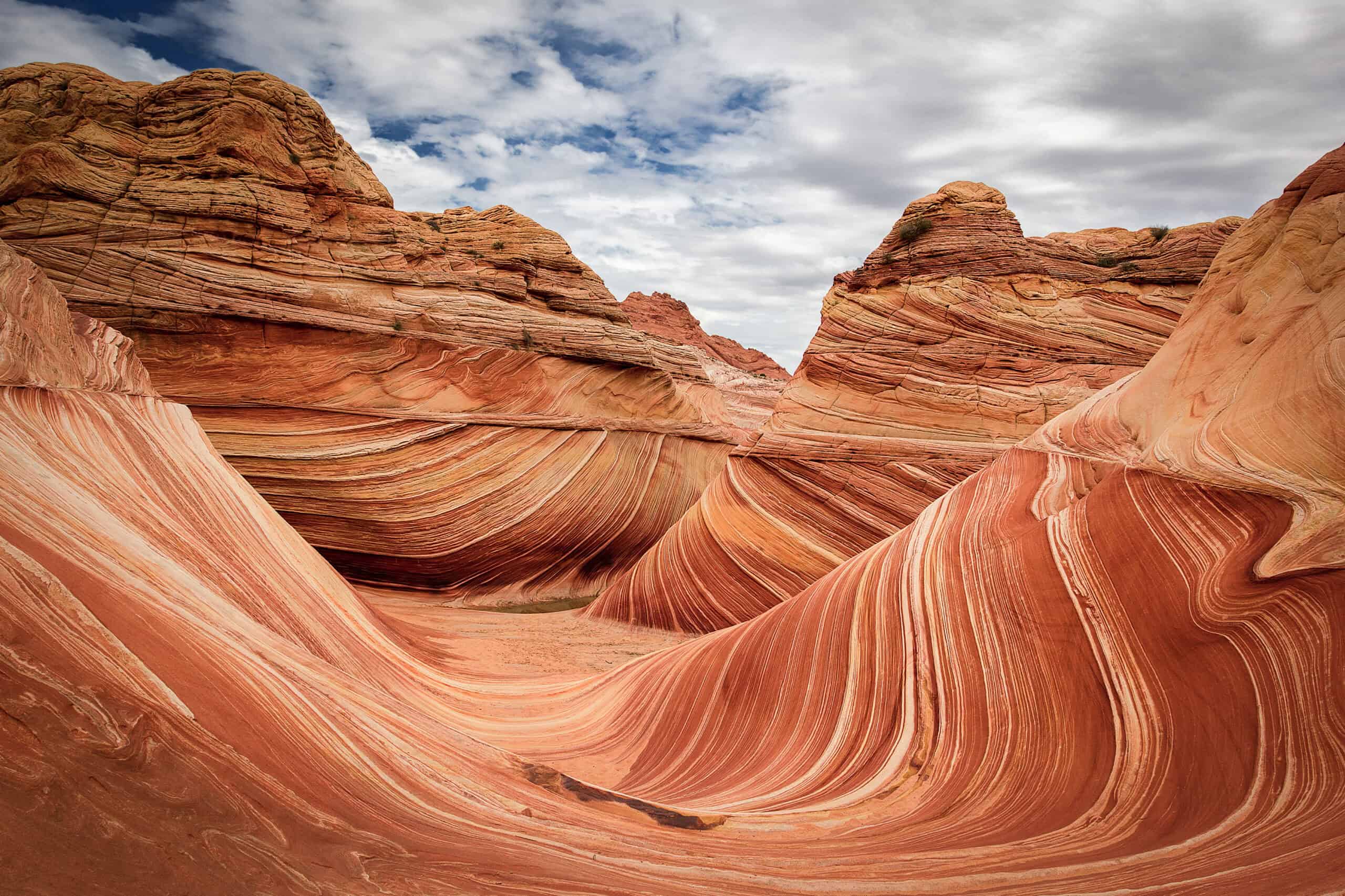
The Wave, straddling the border of Arizona and Utah, is a mesmerizing sandstone formation that captivates with its undulating, wave-like patterns. This natural marvel, located in the remote Coyote Buttes North area of the Paria Canyon-Vermilion Cliffs Wilderness, was formed over millions of years by wind and rain eroding the Navajo Sandstone. The result is a smooth, flowing surface of rock that seems to ripple like the ocean. The Wave’s vibrant hues of red, orange, and pink are due to the presence of iron oxide and other minerals, which add to its surreal appearance. Access to The Wave is highly restricted, with a limited number of daily permits available to preserve the delicate landscape. The formation’s remote location, combined with its otherworldly beauty and the difficulty of reaching it, make The Wave one of the most sought-after and bizarre geological wonders in the world. It’s a natural canvas that defies belief, drawing photographers and hikers from around the globe.
Fly Geyser, Nevada, USA
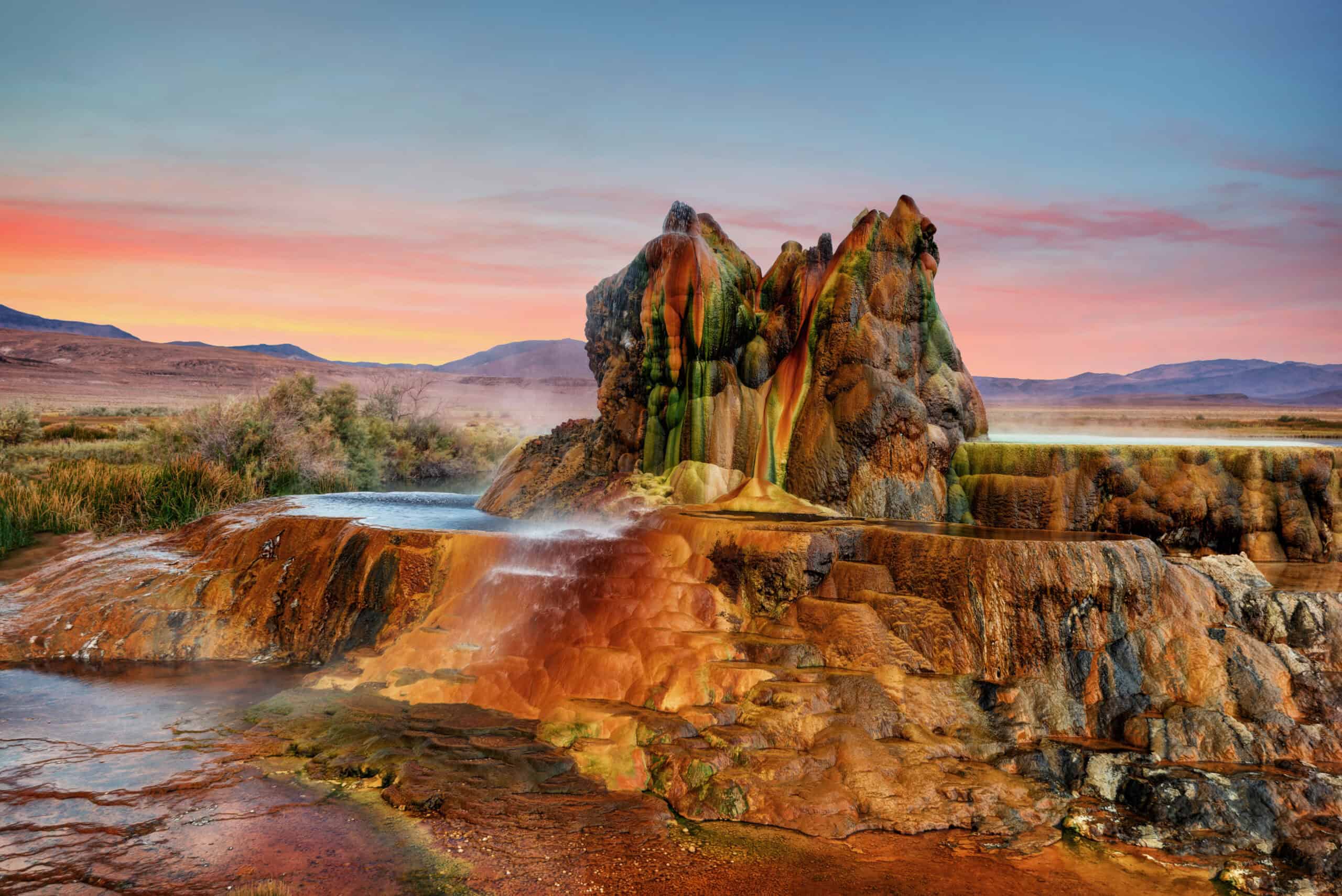
Fly Geyser is a man-made yet utterly bizarre geological feature located in the Black Rock Desert of Nevada. It was accidentally created in 1964 during an attempt to drill a well for irrigation. When the drilling hit a geothermal pocket, hot water began spewing out, and over time, the minerals in the water built up to form colorful terraces and cones. The geyser’s vibrant colors, which range from red and orange to green, are due to the thermophilic algae that thrive in the hot, mineral-rich waters. The cones of Fly Geyser continue to grow as the water, heated by geothermal activity below the surface, constantly deposits minerals. This ever-evolving landscape is as dynamic as it is surreal, with the geyser frequently erupting, sending plumes of hot water and steam into the air. The remote location and the bizarre, almost alien appearance of Fly Geyser make it a unique and intriguing geological phenomenon, attracting both scientists and curious travelers alike.
Tsingy de Bemaraha, Madagascar
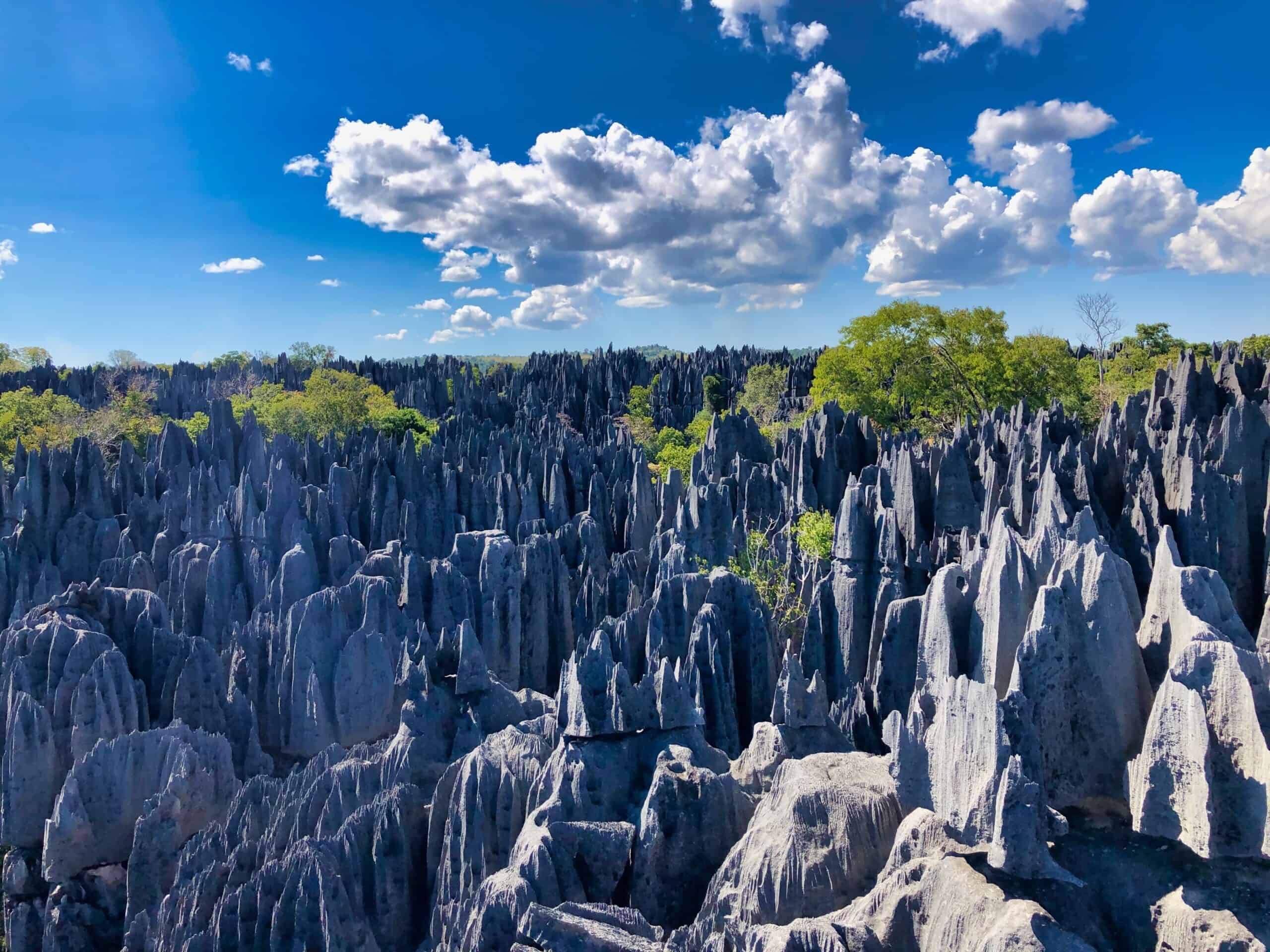
Tsingy de Bemaraha, located in western Madagascar, is one of the most extraordinary and bizarre geological formations on the planet. This UNESCO World Heritage Site is characterized by its labyrinth of razor-sharp limestone pinnacles, known as tsingy, which rise up to 120 meters high. These jagged formations were created over millions of years by the erosion of limestone by acidic rainwater, resulting in a forest of stone needles. The word “tsingy” in Malagasy means “where one cannot walk barefoot,” a fitting description of this harsh, rugged landscape. The tsingy are interspersed with deep canyons, caves, and forests, creating a unique ecosystem that is home to a variety of endemic species, including lemurs, birds, and reptiles. The remote and challenging terrain of Tsingy de Bemaraha makes it one of the most inaccessible places in the world, adding to its mystique and allure. It is a geological wonder that stands as a testament to the power of natural forces and the resilience of life in extreme environments.
Underwater Waterfall, Mauritius
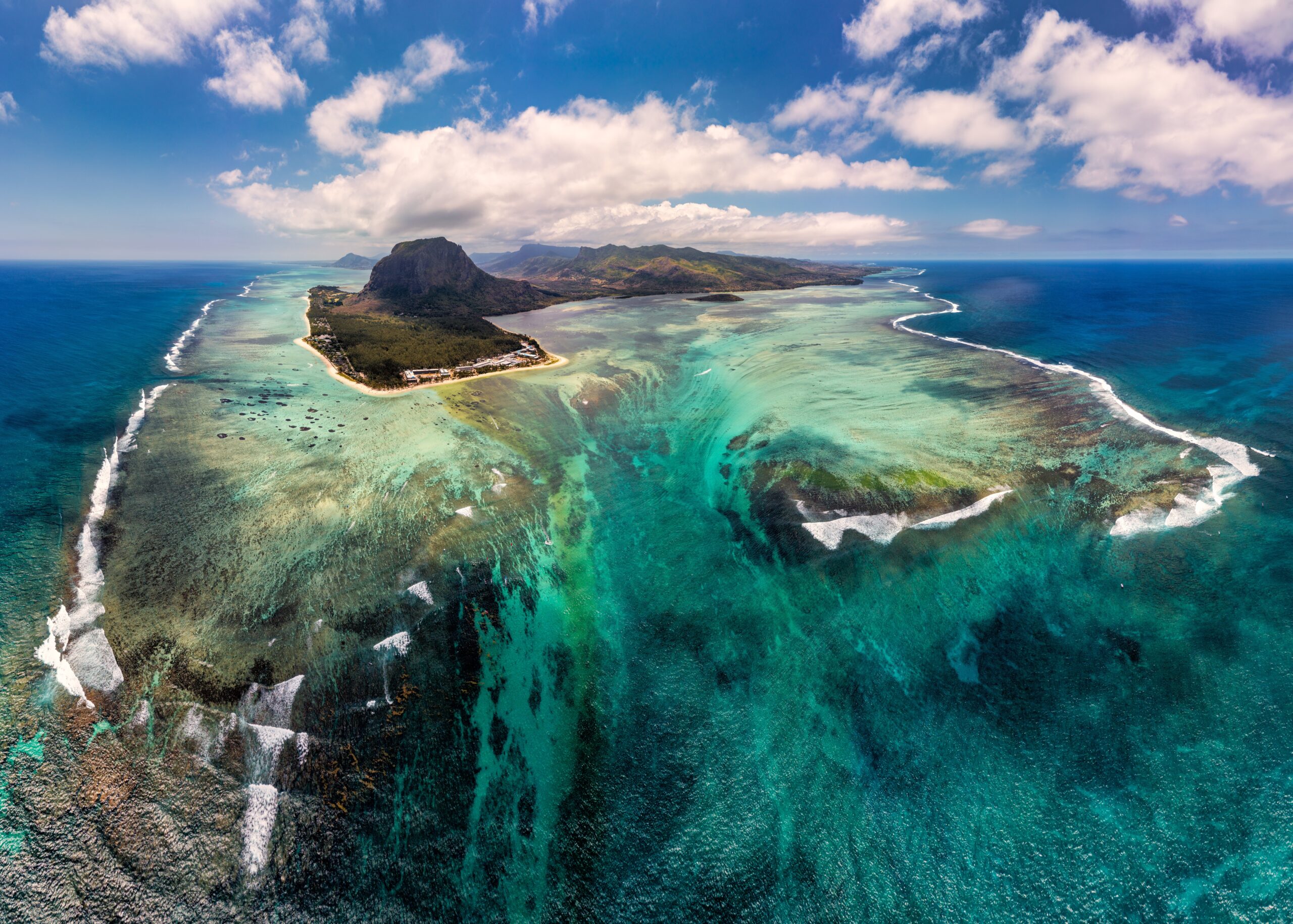
The Underwater Waterfall off the coast of Mauritius is one of the most spectacular optical illusions in the world. Located near the southwestern tip of the island, this phenomenon occurs where the seabed drops sharply into the depths of the Indian Ocean. The interplay of sand, silt, and deep blue water creates the illusion of a cascading waterfall when viewed from above. This “waterfall” is not actually a falling mass of water, but rather a dramatic visual effect caused by underwater currents pushing sand and silt down the steep slope of the ocean floor. The illusion is further enhanced by the varying shades of blue in the surrounding waters, which create a sense of depth and movement. The Underwater Waterfall is best seen from a helicopter or drone, providing a bird’s-eye view of this natural wonder. Its remote location, coupled with its mind-bending visual effect, makes it one of the most bizarre and mesmerizing geological features on the planet.
Blood Falls, Antarctica
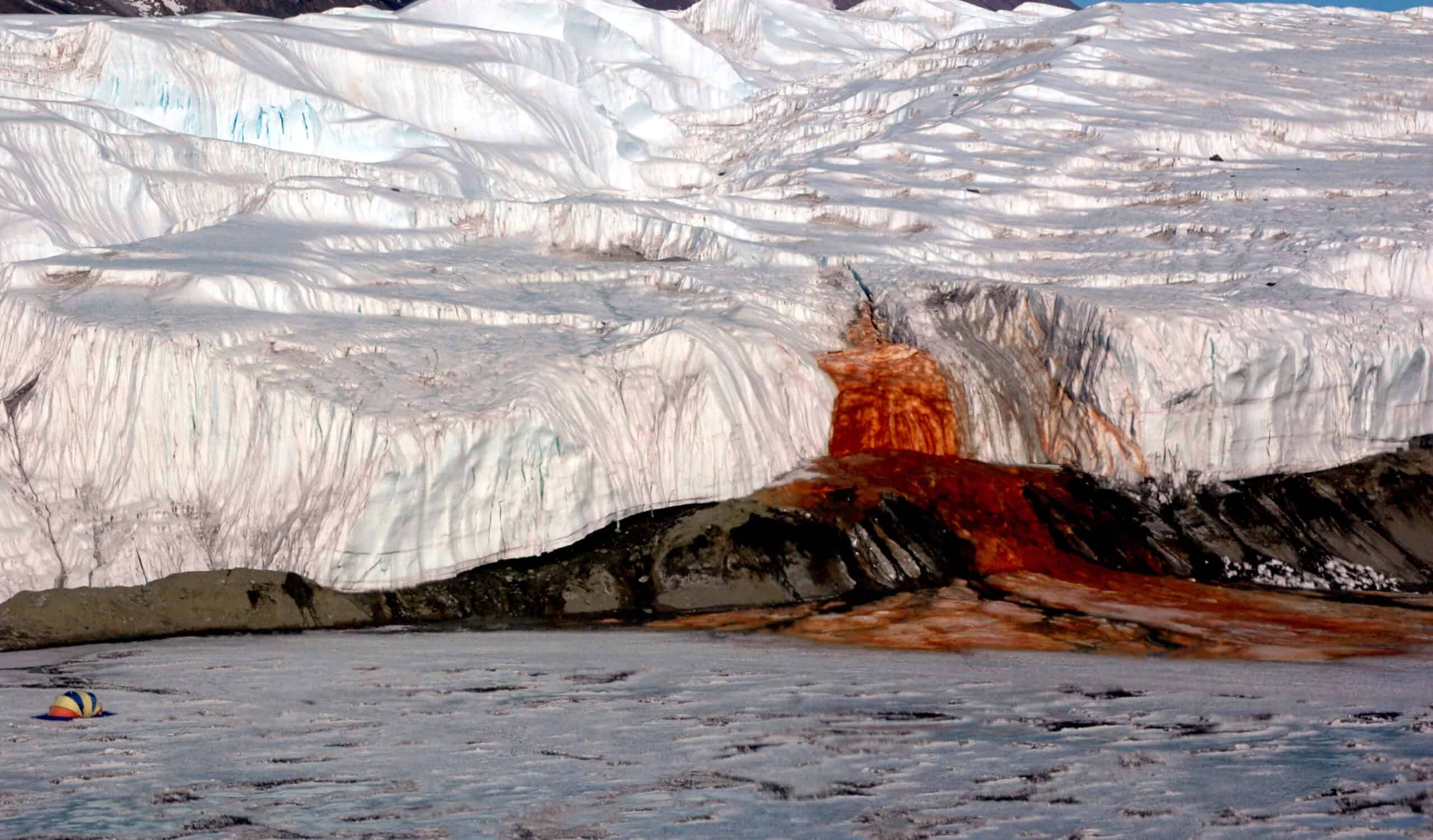
Blood Falls is a hauntingly beautiful and bizarre natural phenomenon located in the McMurdo Dry Valleys of Antarctica. This blood-red waterfall flows from the Taylor Glacier into Lake Bonney, creating a stark contrast against the surrounding ice and snow. The eerie color of the water is due to iron-rich brine that has been trapped beneath the glacier for millions of years. As the iron-rich water makes contact with oxygen at the surface, it oxidizes, giving the water its distinctive red hue. Blood Falls was initially thought to be a result of red algae, but research has shown that the phenomenon is purely chemical. The extreme isolation and harsh conditions of Antarctica make Blood Falls one of the most remote and inaccessible geological features in the world. Its unique and unsettling appearance has made it a subject of fascination for scientists and explorers alike, adding to its status as one of the most bizarre and otherworldly natural wonders on Earth.
Tianzi Mountains, China
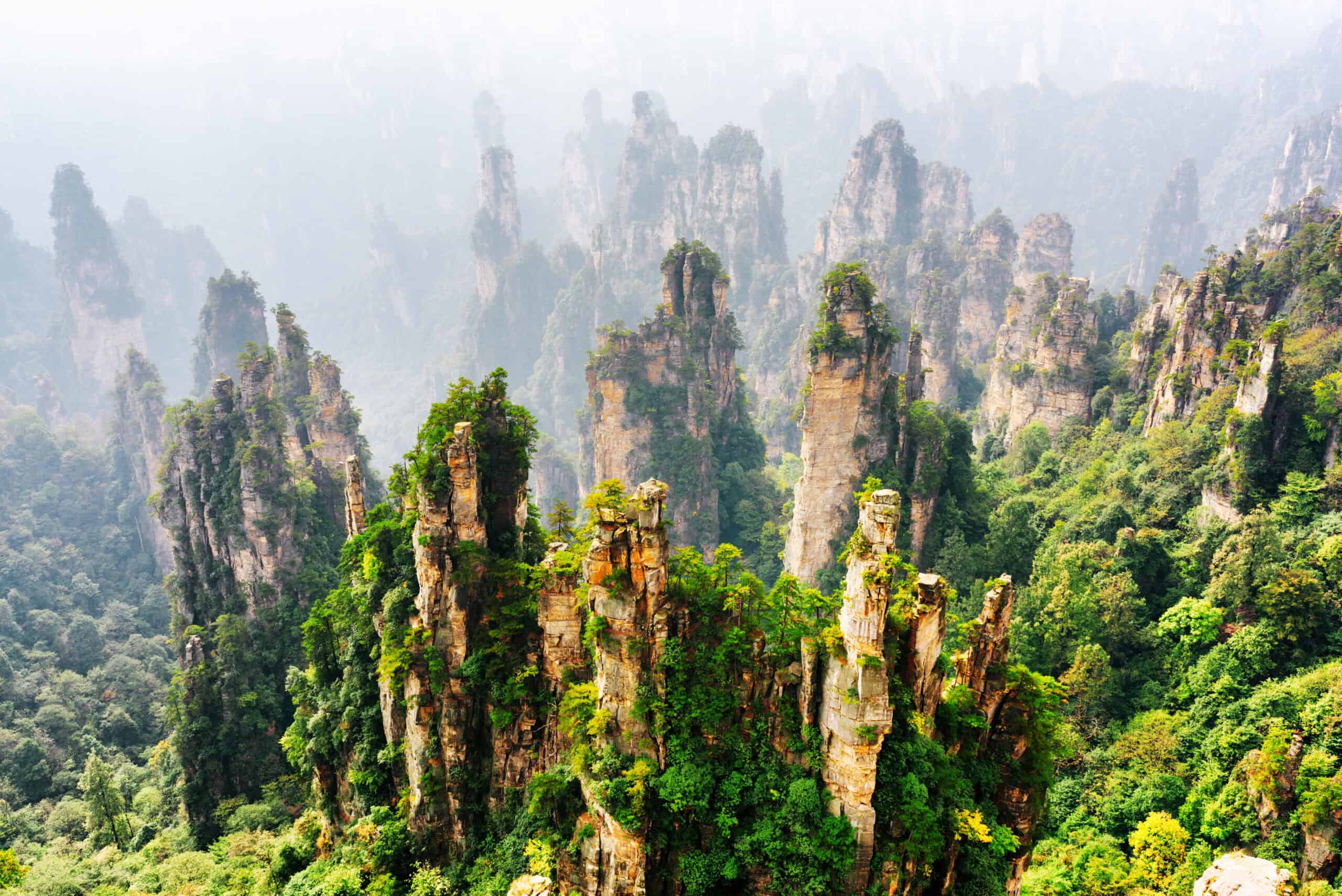
The Tianzi Mountains, located in the Wulingyuan Scenic Area of Zhangjiajie, China, are one of the most surreal and breathtaking geological formations in the world. These towering sandstone pillars, which rise dramatically from the misty valleys below, resemble a landscape straight out of a fantasy novel. The mountains were formed over 300 million years ago by the gradual erosion of sandstone, leaving behind these towering columns that now reach heights of over 1,200 meters. The unique weathering patterns have created an otherworldly landscape, with each pillar standing alone like a sentinel in the mist. The Tianzi Mountains are also known for their dense vegetation, which clings to the cliffs and adds to the ethereal beauty of the region. The remote location and the near-perpetual mist that shrouds the peaks contribute to the mystical atmosphere of the Tianzi Mountains, making them one of the most bizarre and awe-inspiring geological features on the planet.
Mount Roraima, Guyana/Brazil/Venezuela
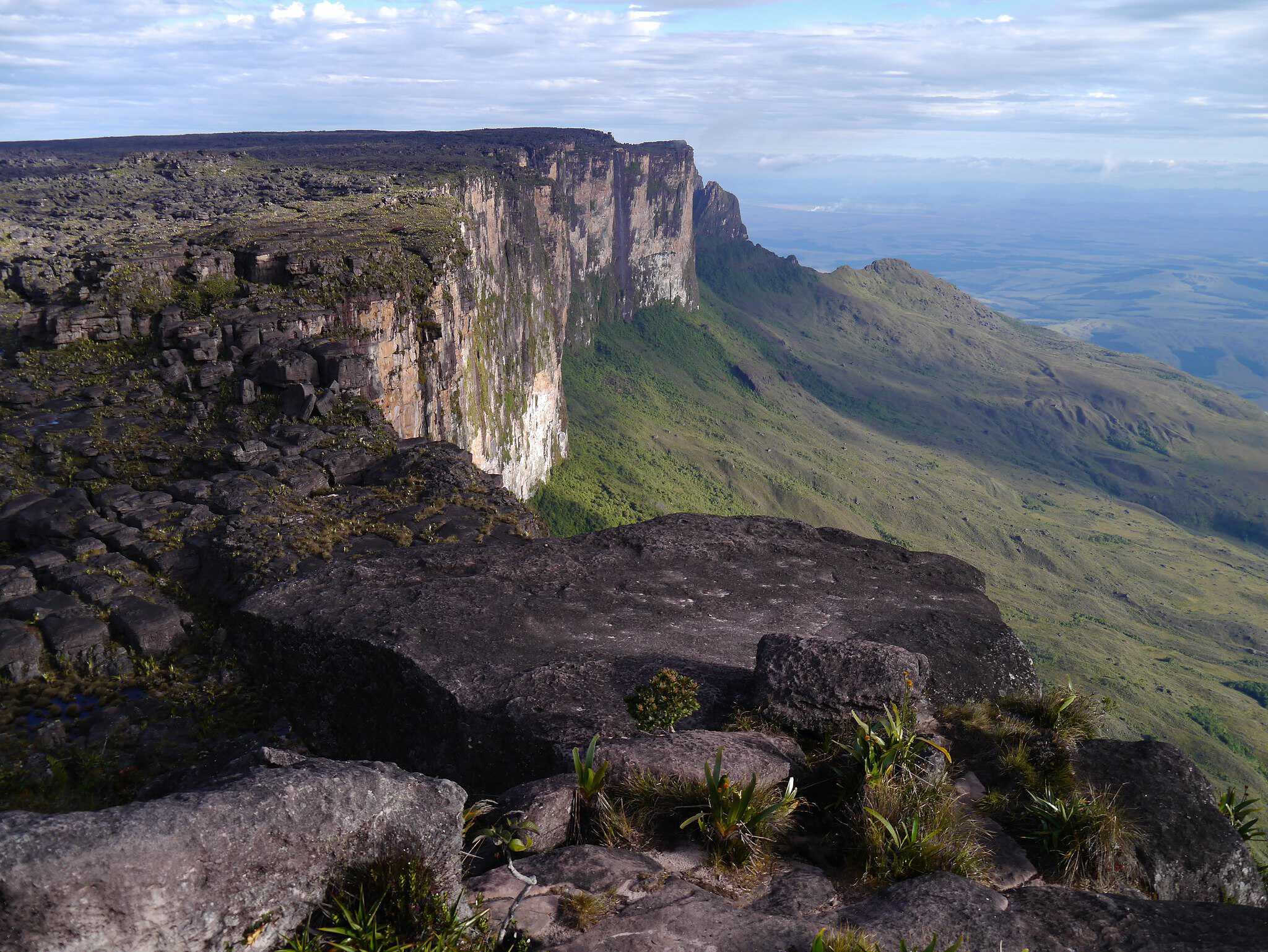
Mount Roraima, a massive tabletop mountain, or tepui, straddles the borders of Guyana, Brazil, and Venezuela. Rising to an elevation of 2,810 meters, this ancient geological formation is one of the oldest plateaus on Earth, dating back around two billion years. The flat summit of Mount Roraima, often shrouded in clouds, creates an isolated ecosystem that is home to many unique species of flora and fauna, some of which are found nowhere else on Earth. The surface of the mountain is a barren, rocky landscape, with strange rock formations sculpted by wind and rain over millennia. The almost otherworldly environment of Mount Roraima, combined with the frequent rains that drench the summit, has inspired tales of lost worlds and mysterious creatures. Its remoteness and the sheer cliffs that surround it make Mount Roraima one of the most inaccessible and bizarre geological features on the planet, attracting adventurers and scientists intrigued by its mysteries.
Chocolate Hills, Philippines
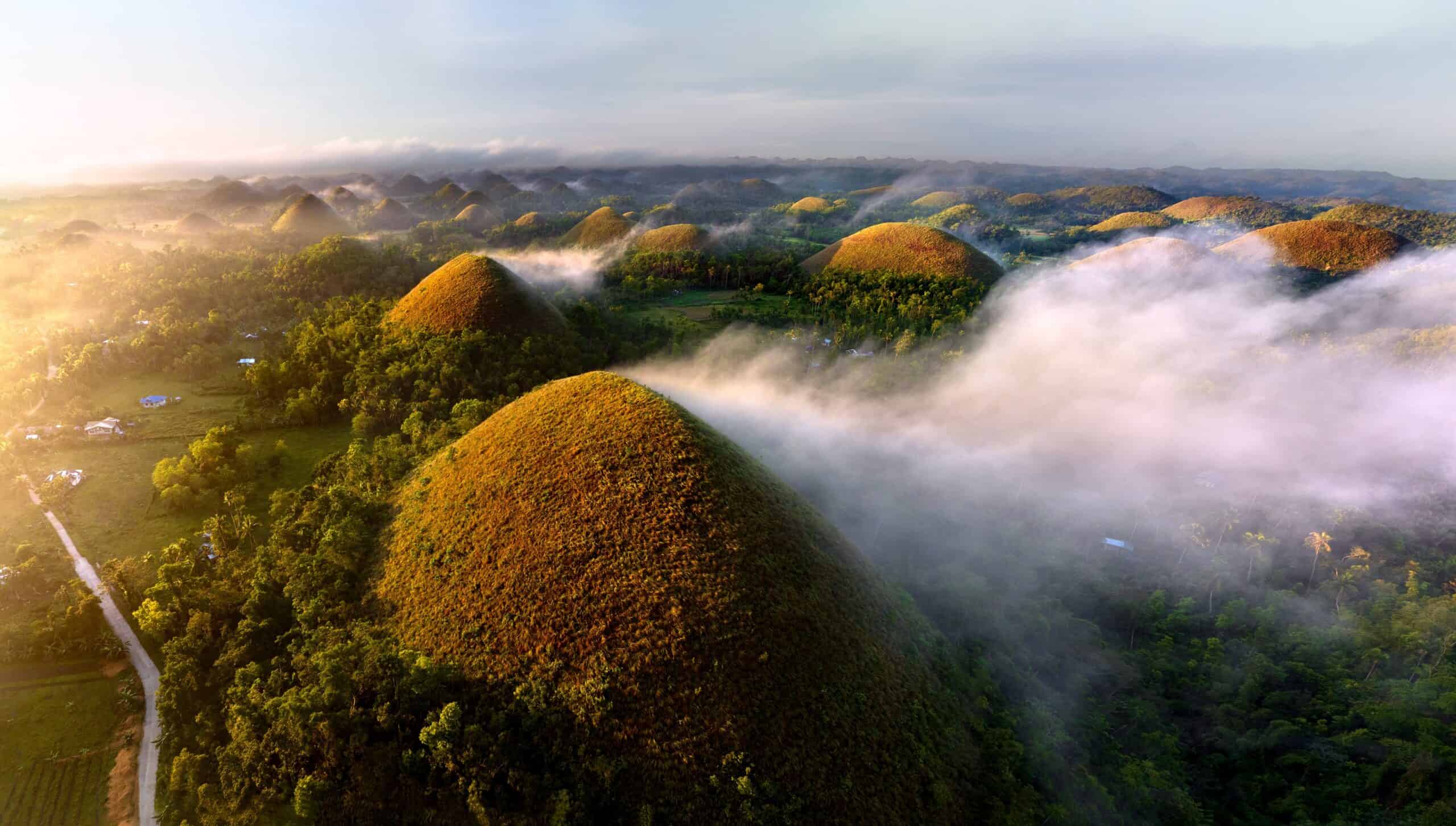
The Chocolate Hills, located on the island of Bohol in the Philippines, are a natural wonder that seems almost too surreal to be real. These conical hills, numbering over 1,700, are spread across an area of more than 50 square kilometers. During the dry season, the grass that covers the hills turns brown, giving them the appearance of giant chocolate mounds, hence the name. The hills are composed of limestone covered with a thin layer of soil and grass, and their uniform shape and size have puzzled geologists for years. While the exact process of their formation remains a subject of debate, it is believed that they were formed by the uplift of coral deposits followed by the action of rainwater erosion. The Chocolate Hills’ unique and bizarre appearance, coupled with their sheer number, make them one of the most extraordinary and unusual geological features in the world, drawing tourists from around the globe.
Danakil Depression, Ethiopia
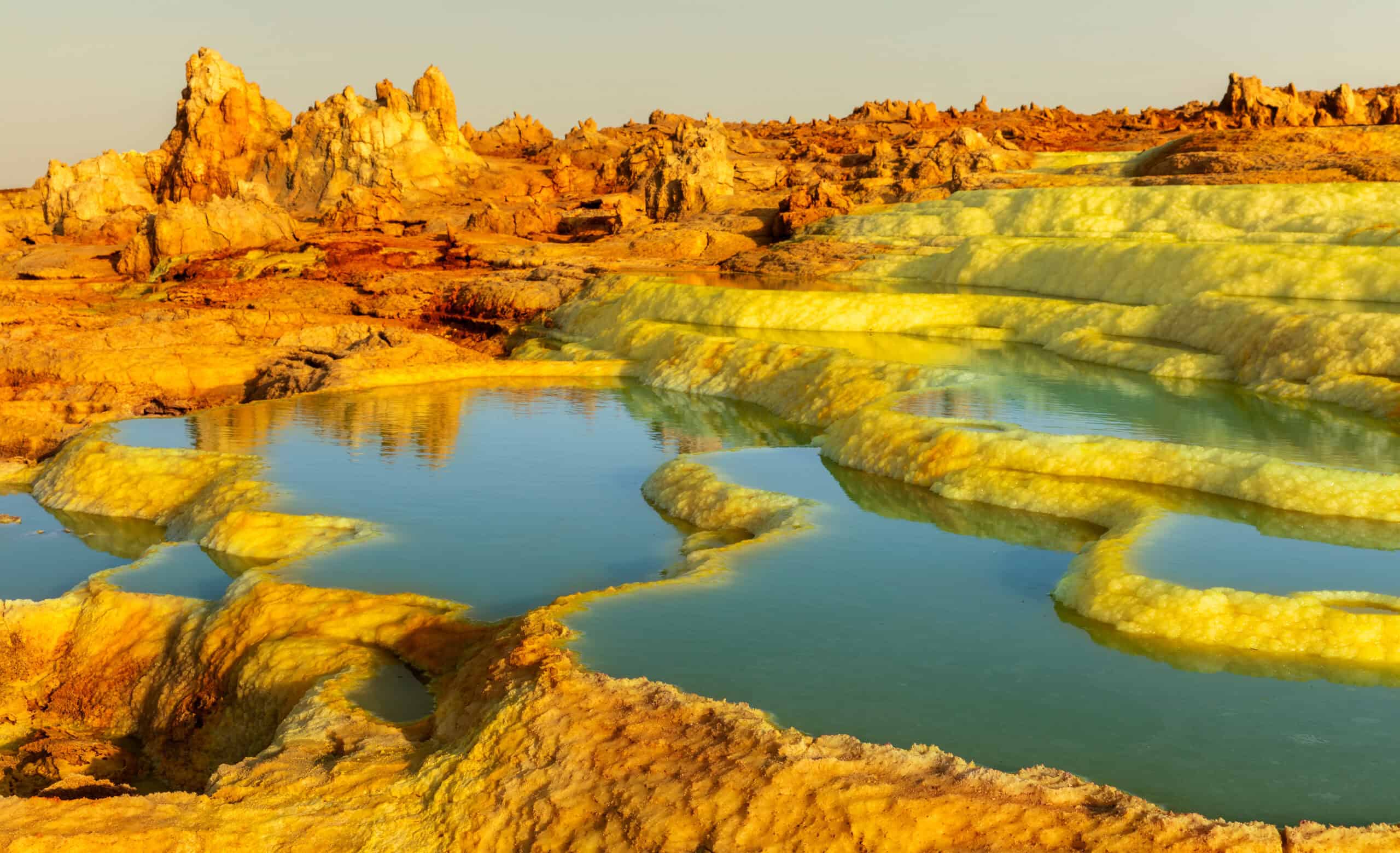
The Danakil Depression in Ethiopia is one of the most inhospitable and surreal landscapes on Earth. Located at the northern end of the Great Rift Valley, this low-lying area is the result of tectonic activity that has caused the land to sink, creating a series of salt flats, volcanoes, and hot springs. The Danakil Depression is home to the Dallol hydrothermal field, where colorful mineral deposits create a psychedelic landscape of bright yellows, greens, and reds. The extreme heat, with temperatures often exceeding 50°C (122°F), and the high levels of volcanic activity make the Danakil Depression one of the most extreme environments on the planet. The depression is also one of the lowest points on Earth, lying over 100 meters below sea level. Despite its harsh conditions, the Danakil Depression is a geological wonder, with its bizarre and alien landscape offering a glimpse into the powerful forces that shape our planet.
Fingal’s Cave, Scotland
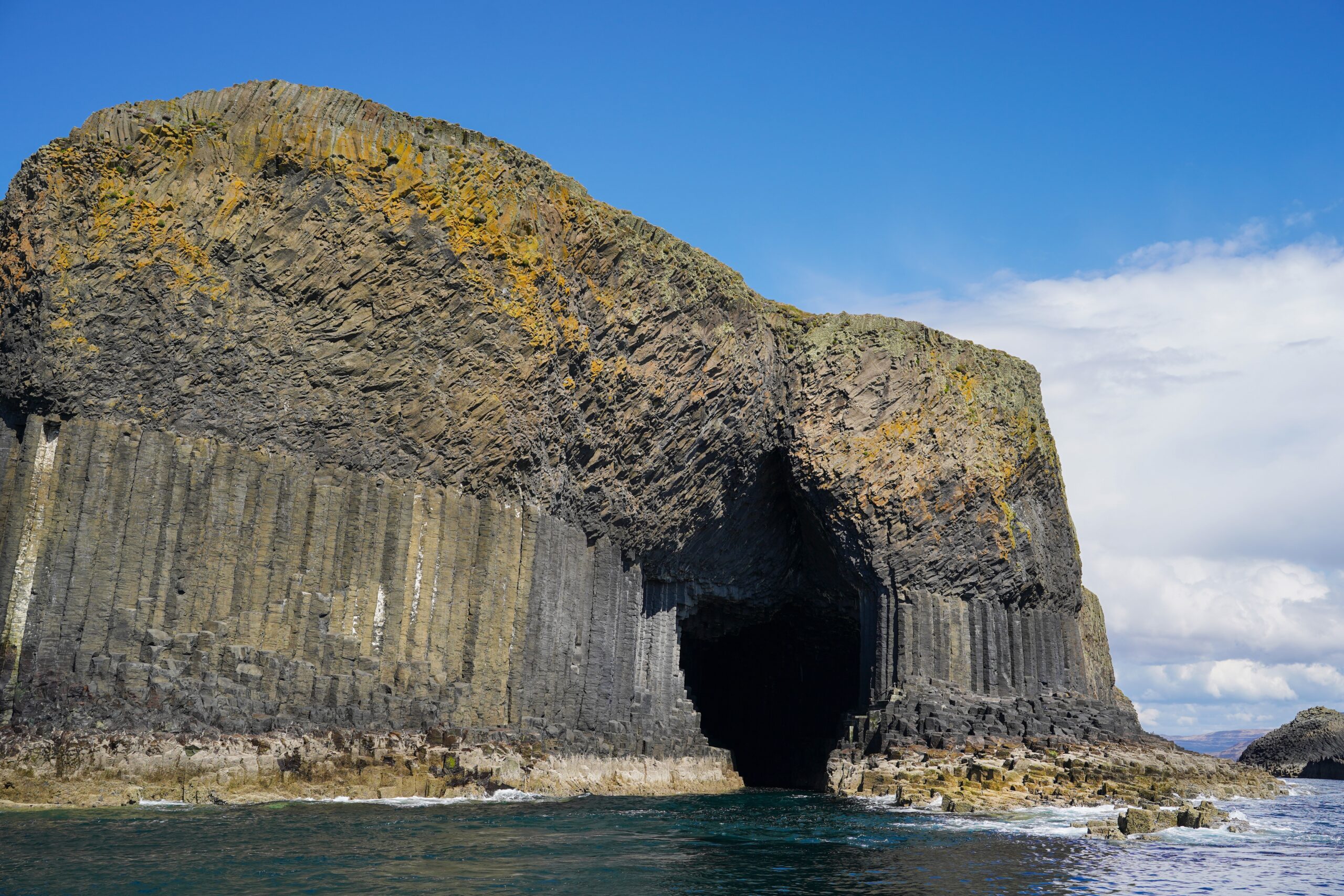
Fingal’s Cave, located on the uninhabited island of Staffa in Scotland, is a remarkable natural formation that combines geological beauty with acoustical wonder. The cave is formed entirely from hexagonal basalt columns, similar to those found at the Giant’s Causeway in Northern Ireland, which were created by volcanic activity around 60 million years ago. What makes Fingal’s Cave truly bizarre is its cathedral-like structure and the haunting sounds that resonate within. As waves crash against the cave’s walls, the echoes produce eerie, almost musical tones that have inspired artists and composers for centuries, including Felix Mendelssohn’s famous overture “The Hebrides.” The cave’s remote location, accessible only by boat, adds to its mystique, while the perfectly formed basalt columns give it an otherworldly appearance. Fingal’s Cave is not only a geological marvel but also a place of natural acoustics that make it one of the most bizarre and enchanting geological features in the world.
Lençóis Maranhenses, Brazil
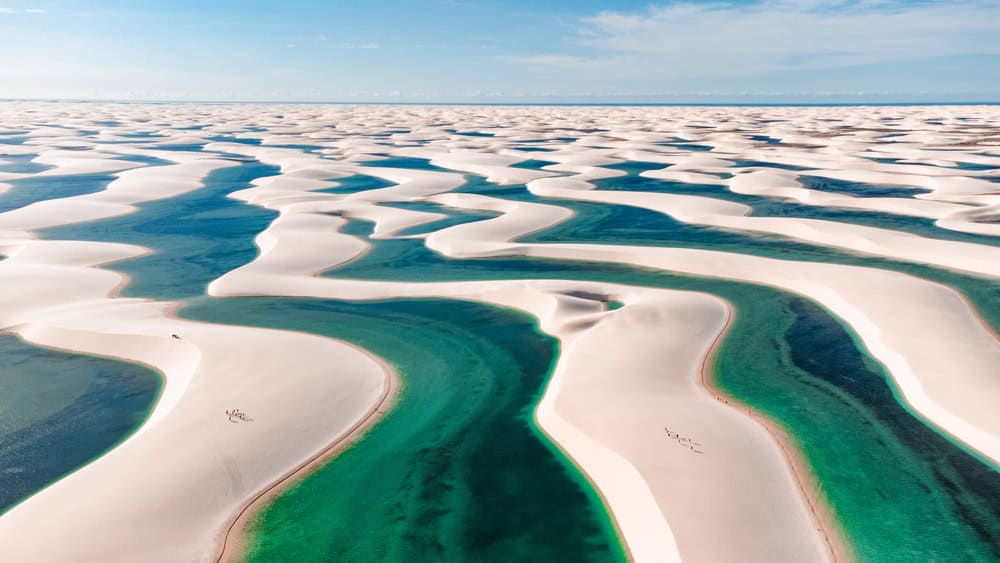
Lençóis Maranhenses National Park in Brazil is a mesmerizing and surreal landscape where vast white sand dunes stretch as far as the eye can see, interspersed with crystal-clear freshwater lagoons. This unique environment is created by seasonal rains that fill the valleys between the dunes, turning the park into a series of turquoise lagoons set against a backdrop of white sand. The lagoons are at their fullest between July and September, creating a stunning contrast between the arid dunes and the water-filled basins. What makes Lençóis Maranhenses particularly bizarre is the fact that it is technically a desert, yet it receives enough rainfall to sustain these temporary lakes. The shifting sands and the ephemeral nature of the lagoons create an ever-changing landscape that is both beautiful and disorienting. The remote location of the park, far from major cities, adds to its allure, making it one of the most bizarre and breathtaking geological features in the world.
Jeju Lava Tubes, South Korea
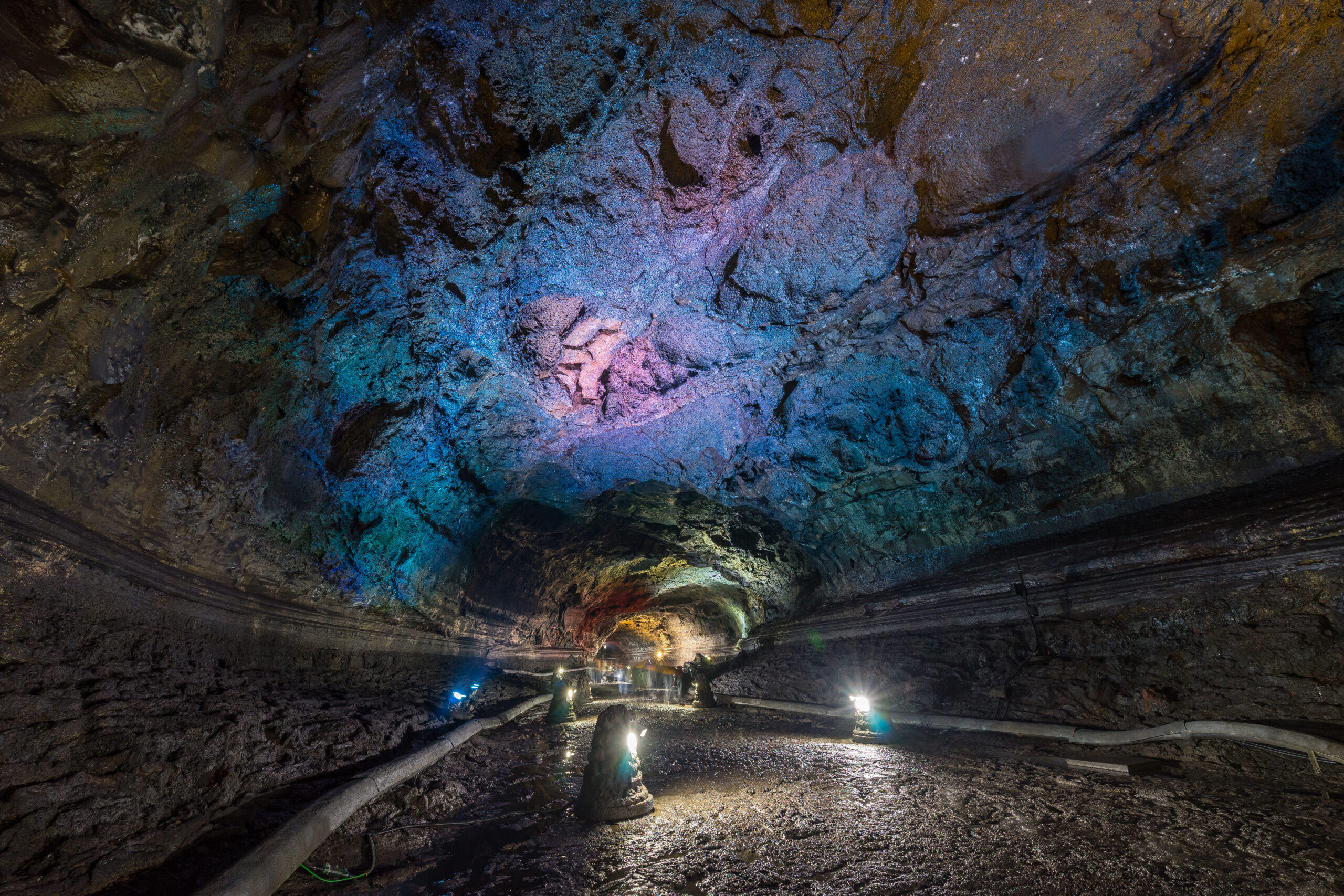
The Jeju Lava Tubes on Jeju Island, South Korea, are a fascinating and bizarre geological feature formed by volcanic activity around 200,000 years ago. These tubes are part of a larger volcanic system that includes Mount Hallasan, South Korea’s highest peak. The tubes were created as lava flowed from the volcano, with the outer layer cooling and solidifying while the molten lava inside continued to flow, eventually leaving behind hollow tunnels. The tubes are among the largest and most well-preserved in the world, with some reaching heights of up to 30 meters. The interior of the tubes is a study in contrasts, with smooth, flowing walls and jagged formations where the lava cooled unevenly. The multicolored walls, formed by various mineral deposits, add to the surreal beauty of the caves. The Jeju Lava Tubes are a UNESCO World Heritage Site and are considered one of the most significant and bizarre geological formations in Asia.
This article originally appeared on Rarest.org.
More from Rarest.org
Vintage cars have an undeniable allure that transcends time. Their classic designs, storied histories, and limited production numbers make them highly sought after by collectors. Read more.
The allure of lost cities has fascinated explorers, historians, and dreamers for centuries. These legendary places, often steeped in myth and mystery, draw us into tales of grandeur, adventure, and the unknown. Read more.
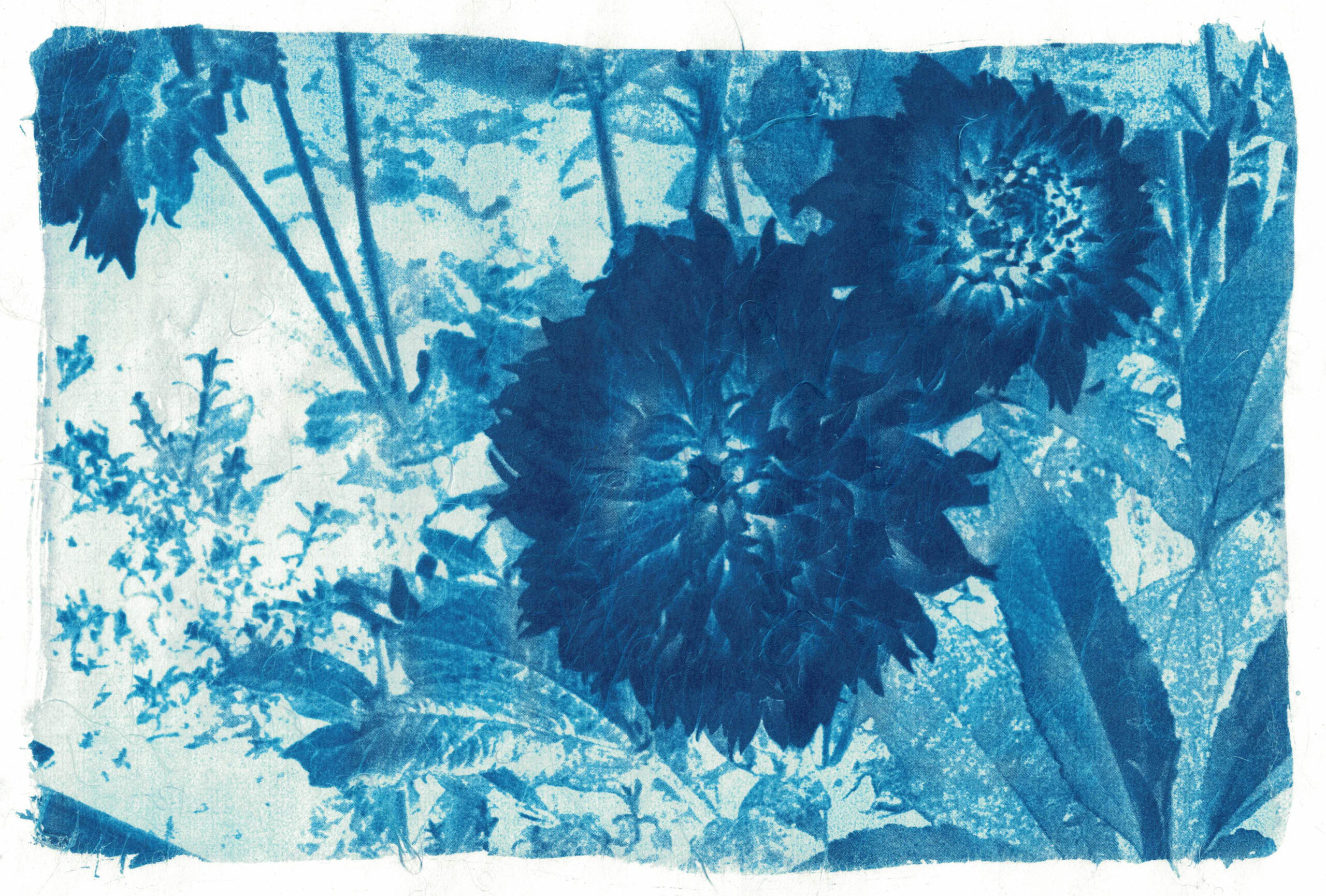
Printmaking has long been a playground for artists seeking to explore and expand their creative boundaries. Read more.


